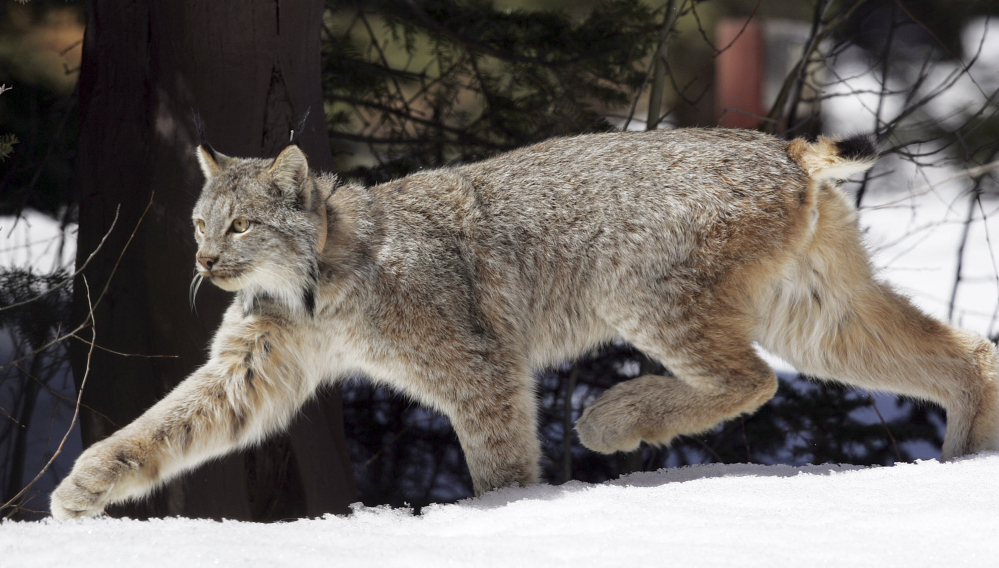BILLINGS, Mont. — It could take two years or more to finish a long-delayed recovery plan for Canada lynx after a judge ordered the federal government to move forward with the work, a U.S. Fish and Wildlife Service official said Friday.
The snow-loving wild cats were listed as a threatened species in 2000. After the wildlife agency repeatedly missed its own deadlines to start work on a recovery plan, environmental groups sued last year in federal court in Montana.
Siding with the plaintiffs, U.S. District Judge Donald Molloy on Thursday gave officials 30 days to propose a schedule for completing the recovery plan.
Molloy said the history of the case raised skepticism about the agency’s ability to get the work done without court intervention. Federal officials previously had pledged to initiate recovery plans in 2007, 2011 and, most recently, by the end of this year.
“The stutter-step approach taken by the service raises the concern — even the certainty — that if a deadline is not in place, a new impediment will continually prevent the development of a recovery plan for the lynx,” Molloy wrote.
In the Lower 48 states, lynx are rarely seen across a 14-state range that includes portions of the Northeast, the Rocky Mountains, the Great Lakes and the Cascade Range of Washington and Oregon. It’s unknown how many survive in the U.S.
Because the threats to the animal vary significantly across that range, Fish and Wildlife Service Assistant Regional Director Mike Thabault said Friday that the recovery plan could take two years or more to complete.
“The original listing was based on forest management practices within the northern tier of the country,” he said. “When you look at Montana, Idaho, Washington, there’s a lot of federal land. Then you look at places like Wisconsin, Minnesota, Maine, where there’s mostly private land. Forest practices differ across the range.”
Canada lynx aren’t listed as threatened in Alaska. Large paws help the predator stay on top of the deep snows that are typical through its range — and also make it easier to capture the snowshoe hares that are its primary prey.
The government has taken some steps to protect the animals since their 2000 listing, including a 2009 designation of habitat considered critical to the species’ survival.
The agency had hoped to start work on the recovery plan earlier, but was delayed in part by lawsuits over the habitat plan, Thabault said. A revised habitat plan was proposed last year.
But Molloy said such justifications become less persuasive the longer the delays continue.
His ruling came in a lawsuit brought by Friends of the Wild Swan, Rocky Mountain Wild, Biodiversity Conservation Alliance and the San Juan Citizens Alliance. They argued the government should be pushing ahead on both the habitat and recovery issues simultaneously to keep the lynx from edging closer to extinction.
Plaintiffs’ attorney Matthew Bishop said he hoped to work with federal wildlife officials as they craft their schedule.
“They’ve got a mandatory duty to do a recovery plan, and it’s been too long,” Bishop said.
Send questions/comments to the editors.



Comments are no longer available on this story